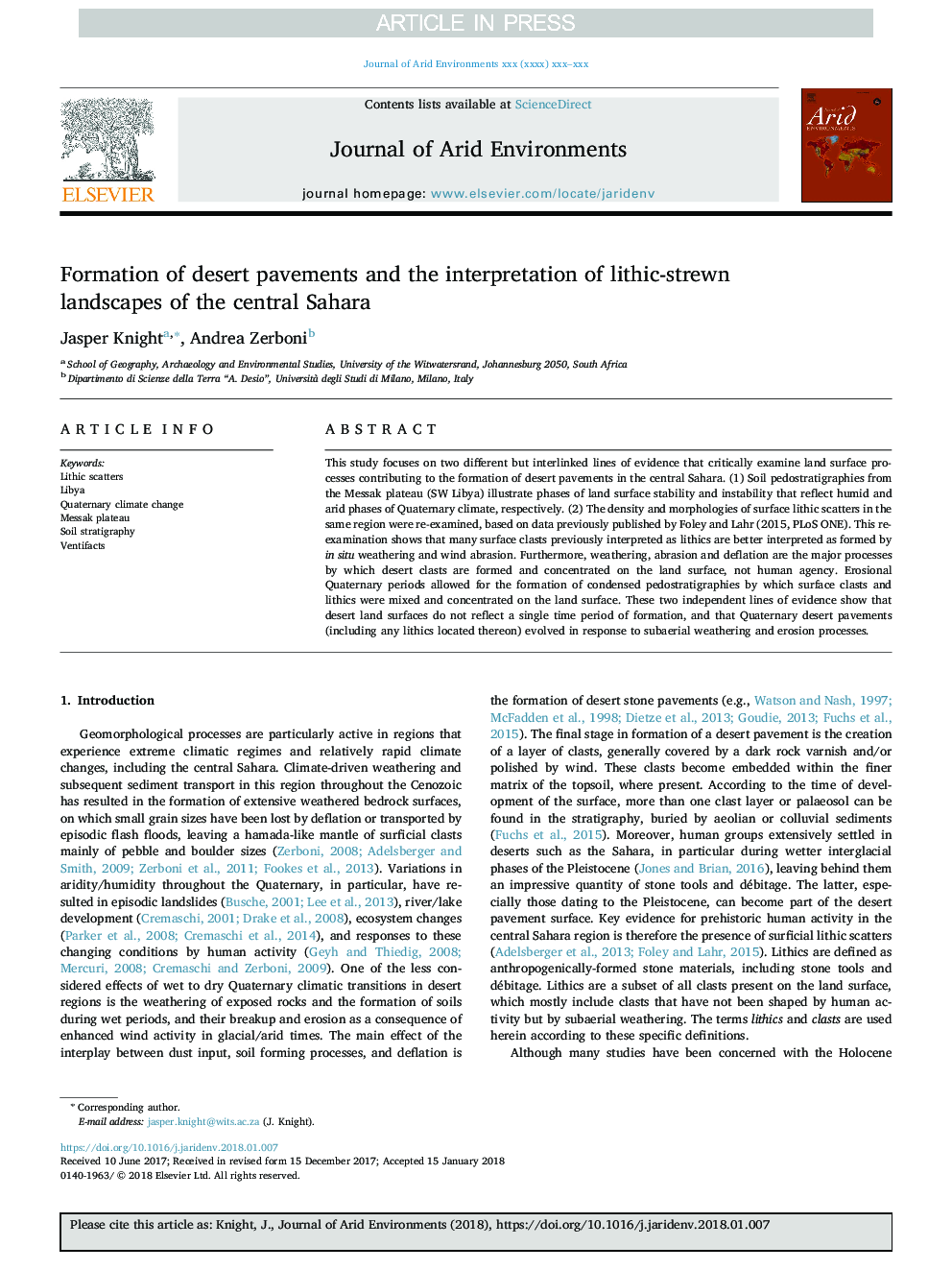| کد مقاله | کد نشریه | سال انتشار | مقاله انگلیسی | نسخه تمام متن |
|---|---|---|---|---|
| 8848505 | 1618206 | 2018 | 13 صفحه PDF | دانلود رایگان |
عنوان انگلیسی مقاله ISI
Formation of desert pavements and the interpretation of lithic-strewn landscapes of the central Sahara
ترجمه فارسی عنوان
تشکیل روستاهای بیابانی و تفسیر مناظر سیل زده در صحرای مرکزی
دانلود مقاله + سفارش ترجمه
دانلود مقاله ISI انگلیسی
رایگان برای ایرانیان
کلمات کلیدی
اسیدیته لیت، لیبی، تغییر آب و هوای چهارگانه، فلات مارش چینه شناسی خاک، شناسایی
موضوعات مرتبط
مهندسی و علوم پایه
علوم زمین و سیارات
فرآیندهای سطح زمین
چکیده انگلیسی
This study focuses on two different but interlinked lines of evidence that critically examine land surface processes contributing to the formation of desert pavements in the central Sahara. (1) Soil pedostratigraphies from the Messak plateau (SW Libya) illustrate phases of land surface stability and instability that reflect humid and arid phases of Quaternary climate, respectively. (2) The density and morphologies of surface lithic scatters in the same region were re-examined, based on data previously published by Foley and Lahr (2015, PLoS ONE). This re-examination shows that many surface clasts previously interpreted as lithics are better interpreted as formed by in situ weathering and wind abrasion. Furthermore, weathering, abrasion and deflation are the major processes by which desert clasts are formed and concentrated on the land surface, not human agency. Erosional Quaternary periods allowed for the formation of condensed pedostratigraphies by which surface clasts and lithics were mixed and concentrated on the land surface. These two independent lines of evidence show that desert land surfaces do not reflect a single time period of formation, and that Quaternary desert pavements (including any lithics located thereon) evolved in response to subaerial weathering and erosion processes.
ناشر
Database: Elsevier - ScienceDirect (ساینس دایرکت)
Journal: Journal of Arid Environments - Volume 153, June 2018, Pages 39-51
Journal: Journal of Arid Environments - Volume 153, June 2018, Pages 39-51
نویسندگان
Jasper Knight, Andrea Zerboni,
